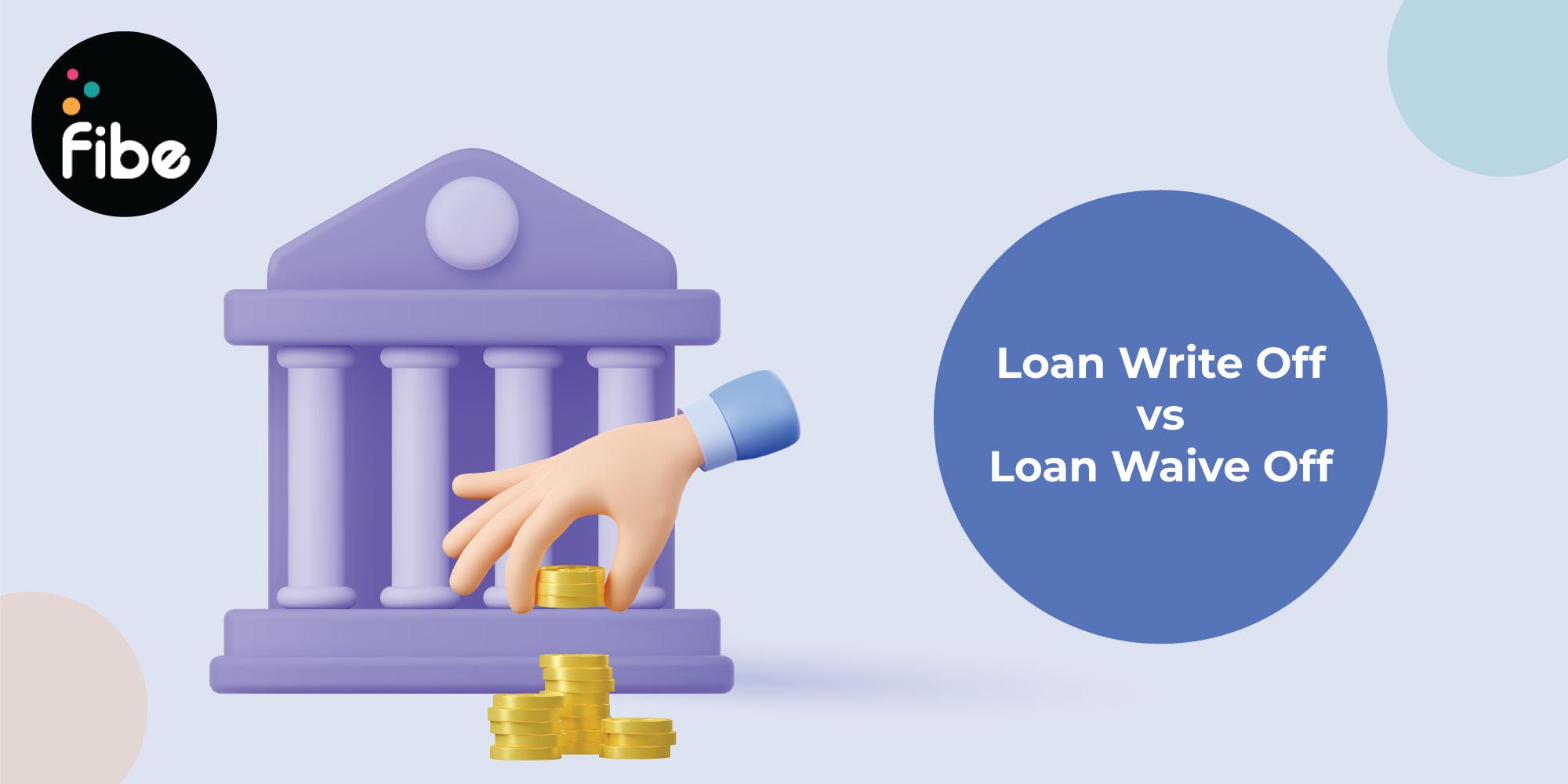- Home
- Blogs
- Personal Loan
- Loan Write Off Vs Loan Waive Off
Important differences between a loan write-off and waive-off
- Updated on: 25 Jun 2024

You may have heard of lenders who waive loans or write them off. When a borrower fails to repay the loan instalments for 90 days, banks and other lending institutions consider it a bad debt or a non-performing asset (NPA). That is when they take action by either waiving off loans or writing them off. Both these terms may seem interchangeable but they are not.
To know the loan waiver meaning and how it differs from a loan write-off, read on.
Check the following table to understand what happens when lenders waive loans or write them off.
| Particulars | Loan Waive-Offs | Loan Write-Offs |
|---|---|---|
| Meaning | Lenders waive loans when they give up all claims to recover the loan amount. | A loan write-off means the lender declares a part of the loan amount as uncollectible. It is then recorded as a bad debt or a non-performing asset (NPA) in their ledger. |
| Loan Recovery | It relieves the borrower from the burden of repaying the loan. | A loan write-off doesn’t mean that the borrower need not pay back the repayment amount. |
| Collateral | When lenders waive loans, they release the collateral and return it to the borrower. | When the lender writes off the loan, they can legally retain the collateral and auction it to recover the loan amount. |
| Eligibility | Banks generally provide a waive-off to farmers when they find it challenging to repay the loan due to natural calamities. | The lender can write off the loan of any borrower when they want to clear their balance sheet. |
| Legal Consequences | There are no legal consequences against the borrower. | The lender can initiate legal proceedings in this context. |
To understand this better, consider this example: Say Y took a loan of ₹5 lakhs for a duration of 36 months. Y repaid the loan regularly for a year but failed to pay further instalments as his finances dwindled.
The lender tried contacting Y several times but did not hear from him. This led the lender to write off the loan, which means taking it off its balance sheet to optimise tax liabilities. However, the lender keeps the loan in its books of account and tries to recover it when possible. The lender also has the option to recover the loan by auctioning the collateral provided by Y at the time of application.
Here is another example. Say farmer X took a loan of ₹1 lakh to be repaid over a tenure of 18 months to purchase seeds and equipment for cultivation. For five months, he made regular repayments but subsequently floods destroyed his crop.
This lowered his odds of repaying the loan. However, the state government decided to waive off loans of up to ₹1 lakh for farmers facing problems due to floods. In other words, X will not have to repay the loan. In case X has provided collateral for the loan, the lender will return it.
Here are the pros of loan write-offs for lenders:
On the other hand, lenders provide loan waivers to marginalised borrowers, like farmers. This allows farmers to manage their finances better in trying times, such as when natural calamities lead to destruction of their crop.
As mentioned above, a loan becomes an NPA when the borrower fails to repay it for 90 days. A major reason why borrowers face challenges in repaying loans is the high interest rate and rigid repayment tenure.
With Fibe’s hassle-free Instant Personal Loan or Instant Cash loan, you can rest assured of competitive interest rates and flexible repayment schedules. Download our Personal Loan App here, or log in to our website to enjoy instant disbursal on loans of up to ₹5 lakhs.
Here is an example: Say X took a personal loan of ₹2 lakhs for a tenure of 24 months. After six months, X could not pay EMIs as he was unable to manage his finances properly. He did not inform the lender.
The lender followed up several times but X could not repay any more. The bank then decides to write off the loan. This means that the bank will keep the loan in their books of account so that they can recover the loan amount in the future when X finds himself on stable financial ground.
A loan waiver-off happens when the lender exempts the borrower from repaying the loan.
A loan waiver is the process of releasing the borrower from the burden of repayment of a loan. It means that the lender will not make any more efforts to recover the remaining amount.